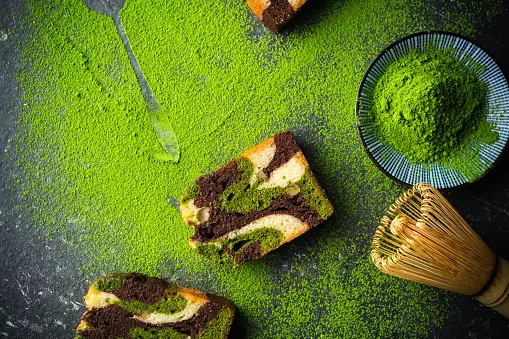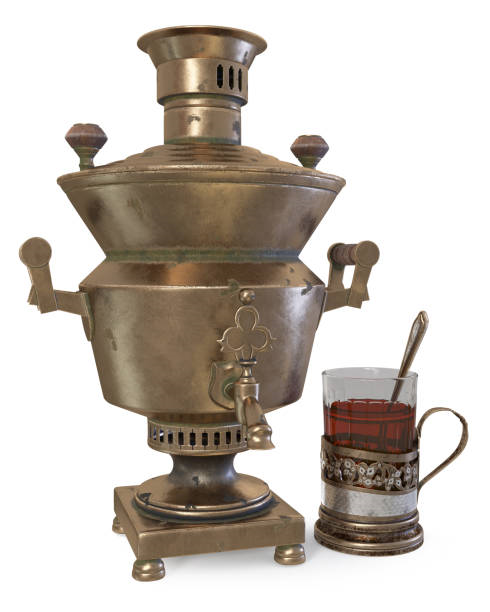
Iced coffee, a beloved beverage enjoyed across the globe, has a rich history and a variety of preparation methods that contribute to its unique flavors and characteristics. This section will delve into the origins of iced coffee, its evolution over time, and the different brewing techniques that are popular today.
Iced coffee’s journey began centuries ago, with roots traceable to various cultures. For instance, the 17th-century French colonists in Vietnam introduced the concept of cold coffee, leading to the creation of the famous Vietnamese iced coffee. Similarly, in Japan, iced coffee has been a staple since the 1920s, reflecting the country’s innovative approach to coffee brewing. Over the years, iced coffee has evolved from a simple chilled version of its hot counterpart to a complex beverage with diverse brewing methods and flavor profiles.
3 Iced Coffee Brewing Methods
The flavor of iced coffee greatly depends on the brewing method. Here are some popular techniques:

- Cold Brew: This method involves steeping coffee grounds in cold water for an extended period, usually 12-24 hours. The result is a coffee concentrate that is less acidic and has a smoother, sweeter flavor profile. Cold brew can be served over ice or diluted with water or milk.
- Iced Pour-Over: This technique is similar to the traditional pour-over method but with a twist. Hot coffee is brewed directly over ice, resulting in a rapid cooling process. The immediate cooling locks in the flavors and aromas, creating a refreshing and complex cup of coffee.
- Japanese Iced Coffee: This method is a variation of the iced pour-over. It involves brewing a concentrated pour-over coffee over ice. The key is to adjust the coffee-to-water ratio to account for the ice, ensuring a balanced and flavorful brew.
Iced Coffee Tasting Tips and Tricks
Tasting iced coffee is an art that involves appreciating the subtle nuances of flavor, aroma, and body. Whether you’re a seasoned coffee aficionado or a curious newcomer, these tips and tricks will enhance your iced coffee tasting experience.
1: Choosing the Right Beans
Origin Matters: The origin of the coffee bean plays a crucial role in its flavor profile. Beans from Africa, for instance, are often known for their fruity and floral notes, while Latin American beans might have a nutty or chocolaty quality. Experiment with beans from different regions to discover your preference.
Roast Level: Lighter roasts tend to retain more of the bean’s original flavor, highlighting the unique characteristics of its origin. Darker roasts, on the other hand, have a more pronounced roasted flavor and less acidity. For iced coffee, medium to light roasts are often preferred as they maintain their flavor complexity even when cold.
2: The Brewing Process
Cold Brew vs. Iced Pour-Over: As mentioned earlier, the method of brewing has a significant impact on the taste. Cold brew, with its low acidity and smooth profile, is perfect for those who prefer a milder coffee. Iced pour-over, known for preserving the bean’s delicate flavors, is ideal for tasting the intricate notes of the coffee.
3: The Role of Water
Quality of Water: The water used in brewing coffee should be clean and free of any unpleasant tastes or odors. Filtered or bottled water is often recommended to ensure that nothing interferes with the taste of the coffee.
4: Experimenting with Brewing Time and Temperature
Brewing Time: For cold brew a longer brewing time results in a stronger, more concentrated coffee. Experiment with brewing times between 12 to 24 hours to find your preferred strength.
Temperature: For iced pour-over, using water just off the boil (about 195°F to 205°F) is ideal for extracting the full range of flavors.
5: Understanding the Flavor Profile
Tasting Notes: When tasting iced coffee, pay attention to the different notes and flavors. Is it fruity, nutty, chocolaty, or floral? Does it have a bright acidity, or is it more mellow? Learning to identify these flavors can greatly enhance your appreciation of iced coffee.
Mouthfeel: Notice the body of the coffee. Is it light and refreshing, or rich and full-bodied? The mouthfeel can add another layer to your tasting experience.
By keeping these tips in mind, you can deepen your understanding and enjoyment of iced coffee. Next, we’ll explore how to identify quality and flavor in iced coffee in more detail.
How to Identify Quality and Flavor in Iced Coffee Tasting
Understanding and identifying the quality and flavor in iced coffee is essential for any coffee enthusiast. This section will guide you through the key aspects to focus on when tasting iced coffee, helping you to discern and appreciate the various elements that contribute to its overall quality and flavor profile.
Freshness is Key:
- Bean Freshness: The freshness of the coffee beans is paramount. Ideally, beans should be used within two weeks of roasting. Fresh beans ensure the fullest and richest flavor, which is particularly important for iced coffee, as chilling can sometimes mute subtle flavors.
- Brew Freshness: Similarly, the freshness of the brew itself matters. Iced coffee, especially cold brew, can be stored in the refrigerator, but it’s best consumed within a week of brewing to maintain optimal flavor.
Visual Inspection: Color and Texture:
- Color: The color of iced coffee can give you an initial indication of its strength and roast level. A lighter color often suggests a lighter roast or a more diluted brew, while a darker color can indicate a stronger or more concentrated coffee.
- Texture: Pay attention to the texture or body of the coffee. Is it thin and watery, or thick and substantial? The mouthfeel can vary greatly depending on the brewing method and the coffee-to-water ratio.
Aroma: What to Sniff For:
- Identifying Aromas: Before tasting, inhale the aroma of the iced coffee. Aroma is a huge component of flavor. What scents do you detect? Floral, fruity, earthy, or nutty notes can all be present, depending on the coffee’s origin and roast.
Tasting Notes: Identifying Flavor Profiles
Flavor Complexity: When you take a sip, let the coffee linger on your palate. Identify the different flavors. Does the coffee have a bright, acidic quality, or is it more smooth and sweet? Look for notes like berries, citrus, chocolate, or spices.
Balance and Aftertaste: Consider how the flavors balance out. Is there a harmonious blend of acidity, sweetness, bitterness, and richness? Also, pay attention to the aftertaste – the flavors that remain in your mouth after swallowing.
Mouthfeel and Aftertaste:
Body: The body of the coffee, whether it’s light, medium, or full, contributes significantly to the overall experience. A full-bodied coffee might feel creamy, while a light-bodied coffee might be more refreshing.
Aftertaste: A good quality iced coffee will have a pleasant aftertaste that lingers on the palate. This could be a smooth, sweet, or even a slightly bitter finish, depending on the type of coffee.
Iced Cofee Tasting 2024 Best Brews
As we journey through 2024, the world of iced coffee continues to evolve, bringing forward new trends and flavors from around the globe. Best and most innovative iced coffee brews of the year, highlighting unique offerings from different regions are
North America: Innovations in Cold Brew
Craft Cold Brews: In North America, particularly in the United States, cold brew has seen a surge in popularity. Artisan coffee shops and roasters are experimenting with single-origin beans and special brewing techniques to create unique flavor profiles.
Flavor Infusions: Beyond the traditional cold brew, there’s a trend towards infusing cold brews with natural flavors like vanilla, caramel, or even non-traditional ones like lavender or rose.
Europe: Traditional Approaches with a Modern Twist
Scandinavian Light Roasts: European countries, especially in Scandinavia, are known for their preference for light roasts. These roasts are ideal for iced coffee as they retain the original flavors and aromas of the beans, resulting in a bright and complex cup.
Italian Iced Espresso Drinks: Italy, the home of espresso, has also adapted its strong, rich coffee culture to the iced coffee scene. Iced versions of classic espresso-based drinks like affogato and latte are gaining popularity.
Asia: Emerging Trends and Unique Flavors
Japan’s Iced Coffee Culture: Japan has long been a pioneer in iced coffee, with its meticulous brewing methods. The Japanese iced coffee, known for its rapid brewing over ice, continues to be a favorite for its clarity and flavor.
Southeast Asian Iced Coffees: Countries like Vietnam and Thailand offer unique iced coffee experiences with their traditional recipes, such as Vietnamese iced coffee (cà phê đá) made with condensed milk and Thai iced coffee often spiced with cardamom and other spices.
South America: Rich Heritage and Robust Beans
Brazilian and Colombian Iced Coffees: South America, particularly Brazil and Colombia, is renowned for its high-quality coffee beans. Iced coffees made from these beans are known for their full-bodied flavor and slight sweetness, making them perfect for a cold brew.
African Innovations: Ethiopia and Beyond
Ethiopian Cold Brews: African countries, notably Ethiopia, the birthplace of coffee, are gaining recognition for their beans in the iced coffee market. Ethiopian beans, known for their floral and fruity notes, make a vibrant and aromatic cold brew.
Each of these regions brings something unique to the table, reflecting their coffee culture and innovations. Whether it’s the robust and sweet flavors from South America, the delicate and complex profiles from Scandinavia, or the rich and aromatic brews from Asia, the world of iced coffee in 2024 is as diverse as it is exciting.
DIY Iced Coffee Recipes for 2024
For those who love the hands-on approach to their coffee, this section will explore some exciting DIY iced coffee recipes that you can try at home. These recipes reflect the latest trends of 2024, offering a perfect blend of traditional methods and modern twists.
Recipe #1: Classic Cold Brew
- Ingredients: Coarse ground coffee, cold water.
- Method: Combine 1 part coffee to 4 parts water in a large jar or pitcher. Stir to ensure all the grounds are fully saturated. Cover and let steep in the refrigerator for 12-24 hours. Strain the coffee using a fine-mesh sieve or a coffee filter. Serve over ice, diluted with water or milk as desired. Sweeten if needed.
- Tip: For a twist, add a cinnamon stick or a few cardamom pods to the brew mixture for a subtly spiced flavor.
Recipe #2: Trendy Dalgona Coffee
- Ingredients: Instant coffee, sugar, hot water, milk, ice.
- Method: Whip together 2 tablespoons each of instant coffee, sugar, and hot water until it becomes light and frothy. Fill a glass with ice and your preferred amount of milk. Top with the whipped coffee mixture. Stir before drinking.
- Tip: Try using alternative milks like almond or oat milk for a different flavor profile.
Recipe #3: Exotic Thai Iced Coffee
- Ingredients: Strong brewed coffee or espresso, condensed milk, cardamom, ice.
- Method: Brew a strong coffee or espresso and let it cool. Stir in condensed milk to taste (typically about 1-2 tablespoons per cup). Add a pinch of ground cardamom. Fill a glass with ice and pour the coffee mixture over it.
- Tip: For an authentic touch, top with a dash of ground cinnamon or a swirl of whipped cream.
Customization Tips:
- Flavor Infusions: Experiment with infusing your iced coffees with flavors like vanilla, hazelnut, or coconut. You can do this by adding flavored syrups or infusing the milk with spices and straining before use.
- Sweetness Adjustments: Adjust the sweetness to your liking. While some prefer the natural flavors of coffee, others might enjoy a sweeter taste. Use sugar, honey, agave, or even sweetened condensed milk as per your preference.
Pairing Food with Iced Coffee
Pairing the right food with your iced coffee can enhance both the drink and the meal, creating a harmonious balance of flavors. This section will provide suggestions on the best food pairings for different types of iced coffee, perfect for those looking to elevate their coffee experience.
Breakfast Pairings:
- Classic Cold Brew: Pair a smooth, rich cold brew with a hearty breakfast. Think avocado toast, breakfast burritos, or a full English breakfast. The robustness of the coffee complements the savory flavors of the food.
- Light Roast Iced Pour-Over: Ideal with lighter breakfast items like yogurt parfaits, fresh fruit, or a simple croissant. The subtle, nuanced flavors of a light roast can be overpowered by heavy foods.
Sweet and Savory Snacks:
- Dalgona Coffee: This sweet, frothy coffee pairs wonderfully with simple, slightly salty snacks like pretzels or popcorn. It also goes well with biscotti or shortbread cookies.
- Thai Iced Coffee: The sweet, creamy nature of Thai iced coffee makes it a perfect match for spicy snacks or dishes. Try it with some Thai spring rolls, samosas, or even a spicy noodle salad.
Dessert Pairings:
- Espresso-Based Iced Coffees: Rich and strong espresso-based iced coffees, like an iced latte or mocha, are perfect with desserts. Pair them with chocolate cake, tiramisu, or a creamy cheesecake.
- Flavored Iced Coffees: Vanilla or caramel iced coffees go well with apple pie, vanilla ice cream, or a caramel dessert. The flavors complement each other without overpowering.
Lunch and Dinner Pairings:
- Cold Brew Concentrate: A strong cold brew concentrate can stand up to the flavors of grilled meats or barbecue. It’s also great with rich, hearty stews.
- Japanese Iced Coffee: This method produces a brew that’s both rich and delicate, making it suitable for pairing with sushi, grilled fish, or a light salad.
Tips for Pairing:
- Consider the Strength: Stronger coffees can handle richer, more flavorful foods, while lighter coffees are best with subtler dishes.
- Balance the Flavors: Aim for a balance where neither the coffee nor the food overpowers the other. They should complement and enhance each other.
- Experiment: Don’t be afraid to try unusual combinations. Sometimes, the most unexpected pairings can be surprisingly delightful.
Pairing food with iced coffee is an adventure in flavors and textures. Whether you’re enjoying a casual snack or a full meal, the right coffee can make all the difference.
Sustainable and Ethical Coffee Consumption
In today’s world, where environmental concerns and ethical considerations are increasingly at the forefront, understanding the impact of coffee consumption is crucial. This section will explore how you can enjoy iced coffee responsibly, focusing on sustainability and ethical sourcing.
Choosing Ethically Sourced Beans:
- Fair Trade Certification: Look for coffee beans that are Fair Trade certified. This certification ensures that the coffee farmers receive fair compensation for their work, contributing to better living conditions and community development.
- Direct Trade Coffee: Some roasters engage in direct trade, buying straight from the farmers. This often results in higher payments for farmers and a closer relationship between the producer and the consumer.
- Organic Coffee: Organic coffee is grown without harmful pesticides and chemicals, making it better for both the environment and your health.
Understanding the Environmental Impact:
- Water Usage: Coffee farming can be water-intensive. Supporting brands that implement water conservation practices in their farming can make a difference.
- Carbon Footprint: Consider the carbon footprint involved in transporting coffee. Locally sourced or regionally grown coffee typically has a lower carbon footprint compared to beans shipped from far away.
Supporting Local Coffee Roasters:
- Community Impact: By buying from local roasters, you’re not only getting fresher beans but also supporting the local economy.
- Reduced Transportation: Local beans mean less transportation is required, which reduces greenhouse gas emissions.
Reducing Waste:
- Reusable Cups and Filters: When making iced coffee at home, use reusable cups and filters to minimize waste.
- Composting Coffee Grounds: Coffee grounds can be composted, turning waste into a resource for gardening.
Educating Yourself and Others:
- Stay Informed: Keep yourself informed about the coffee industry and its impact on the environment and communities.
- Spread Awareness: Share your knowledge with friends and family. Sometimes, making a difference starts with raising awareness.
By making mindful choices about where and how you get your coffee, you can enjoy your iced coffee while also contributing positively to the environment and society.


